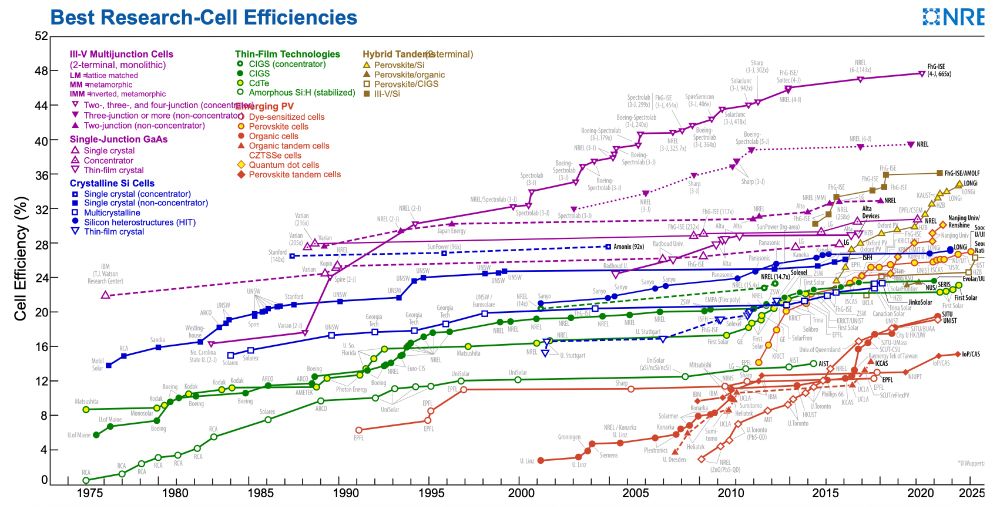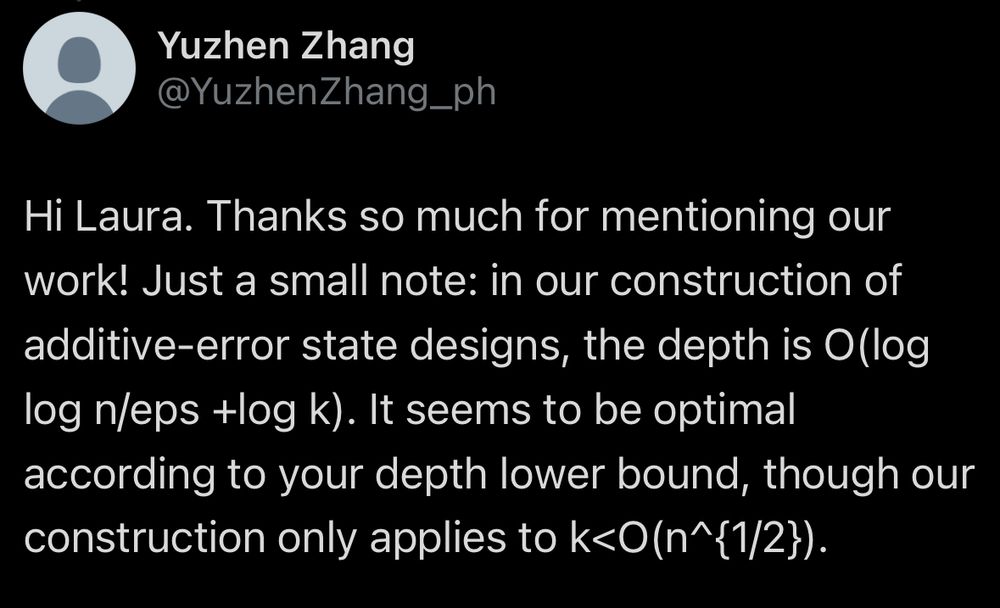
La brea tar pits
Oil is the most Lovecraftian thing that actually exists.
You're telling me that there's a black ichor under the earth made from the ancient dead, whose burning can realize all the dreams of man, but only at the price of slowly returning the earth to its primordial state?
06.11.2025 21:38 — 👍 350 🔁 117 💬 6 📌 8
happy to share some examples privately if that'd be helpful!
05.11.2025 18:53 — 👍 1 🔁 0 💬 0 📌 0
that's fair! it's possible I've just been lucky to have people (friends, mentors, parents) close to me go through this successfully
05.11.2025 18:52 — 👍 1 🔁 0 💬 1 📌 0
interesting, maybe I have a lower bar but I wouldn't say it's particularly uncommon or frowned upon in my circles
04.11.2025 01:07 — 👍 0 🔁 0 💬 1 📌 0
is it not?
03.11.2025 19:05 — 👍 0 🔁 0 💬 1 📌 0

People take for granted the fact that mangos are so delicious, but most don’t know that every logical mango is made out of many physical mangos.
30.10.2025 06:52 — 👍 16 🔁 4 💬 0 📌 0

Are you a computer scientist and don't know what an OTOC is, but want to understand the problem solved in the recent Nature paper by Google Quantum AI? We wrote a 2-page note that explains the motivation and presents a simplified version of the problem for any input size.
scirate.com/arxiv/2510.1...
23.10.2025 02:58 — 👍 32 🔁 4 💬 0 📌 0

MIT rejects Trump administration deal for priority federal funding
MIT is one of the nine schools that were asked to agree to adopt conservative priorities and policies in exchange for funding perks.
This is what courage in the face of authoritarianism looks like. No university should take Trump's bribe & surrender their integrity — bending the knee to a bully only feeds the beast & puts ALL our rights at risk.
Others should follows MIT’s example ASAP.
10.10.2025 17:22 — 👍 866 🔁 214 💬 12 📌 13
+ in the non-adaptive setting, there exist ensembles w/ natural spectral distributions whose dynamics look random in O(1) time ⌛
These results complement each other & highlight subtleties in formulating random models which capture the properties of physical dynamics 🔎 ✨
8/8
10.10.2025 02:11 — 👍 2 🔁 0 💬 0 📌 0

However, when this constraint is relaxed, we show it is possible to construct ensembles of quasi-local time-independent Hamiltonians which generate pseudorandom dynamics!
These ensembles can also be efficiently simulated assuming the existence of quantum-secure OWFs 💻
7/8
10.10.2025 02:11 — 👍 2 🔁 0 💬 1 📌 0

On the other hand, in [2] we consider time evolution dynamics when factoring in uncertainty in H 🤔
When the connectivity of the system is known, we show that the dynamics of any ensemble of local Hamiltonians, at any time scale, can be distinguished from a random unitary.
6/8
10.10.2025 02:11 — 👍 0 🔁 0 💬 1 📌 0

To prove this, we construct Hamiltonians which embed arbitrary Turing machines.
Under standard cryptographic assumptions, there exist Hamiltonians whose long-time dynamics perform computations that are out of reach for (& can be distinguished from) any efficient circuit 🤖
5/8
10.10.2025 02:11 — 👍 0 🔁 0 💬 1 📌 0

While some models admit energy-conserving PRUs, we show that in general no efficient construction exists even for local 1D spin chains ⛓️
Not only that, determining if there exist energy-conserving PRUs for a given family of local 1D Hamiltonians is in general undecidable!
4/8
10.10.2025 02:11 — 👍 0 🔁 0 💬 1 📌 0
This leads us to define energy-conserving ensembles [1] which are maximally random w/ the constraint [U, H] = 0. In general, this is the same as averaging over all times.
We then ask, when can we efficiently construct energy-conserving pseudorandom unitaries (PRUs)? 🔋
3/8
10.10.2025 02:11 — 👍 0 🔁 0 💬 1 📌 0
We first observe that for any time-independent Hamiltonian H, the dynamics are diagonal in the energy eigenbasis.
If H is local, we can also efficiently distinguish it from random unitary dynamics by preparing states with non-zero energy and checking if H is conserved ⚡
2/8
10.10.2025 02:11 — 👍 0 🔁 0 💬 1 📌 0

When can we use random unitaries to (efficiently) model physical dynamics? 💻 ⚛️
Excited to share a couple of works with Liang Mao, Fernando Brandão, Robert Huang, Thomas Schuster in which we explore this question!
[1] arxiv.org/abs/2510.08448
[2] arxiv.org/abs/2510.08434
1/8
10.10.2025 02:11 — 👍 9 🔁 0 💬 1 📌 0
some of us are also too young to understand the myspace vs facebook analogy...
18.09.2025 15:47 — 👍 2 🔁 0 💬 1 📌 0
I've complained a couple times about the lack of physics community here but not done much about it! New commitment: I'll post one interesting arXiv paper a day until things are better.
(To the folks who follow me for non-physics science policy, don't worry; plenty more of that reporting to come.)
08.09.2025 16:09 — 👍 123 🔁 15 💬 4 📌 4


The Ginsburg Center for Quantum Precision Measurement @caltech.edu now stands 4 stories high. Opens summer 2026.
28.08.2025 23:52 — 👍 24 🔁 1 💬 0 📌 0
I don't have anything against it in principle! but you could argue that working with instead of against community norms is better for visibility & communication of your results
27.08.2025 23:33 — 👍 1 🔁 0 💬 1 📌 0
counterpoint: it's fun when academics refuse to write a paper so you see everyone cite a blog post or youtube video instead
27.08.2025 21:55 — 👍 3 🔁 0 💬 1 📌 0
How fast can (pseudo)random unitaries be implemented on a quantum computer? O(1) time suffices (provided you can do things like intermediate measurements)! This -and more- is thanks to a superfun collaboration with Ben Foxman, @nat-parham.bsky.social, and @franvasco.bsky.social (all PhD students!).
19.08.2025 00:54 — 👍 32 🔁 2 💬 0 📌 0
according to other sources commercial panels were only at around 15% a decade ago (when I was learning about energy science in high school the quoted number was around 10%)
14.07.2025 18:11 — 👍 1 🔁 0 💬 0 📌 0

also according to wikipedia the record for solar cell efficiency performance in r&d testing is close to 48% which is crazy when you compare to photosynthesis (~5%) and ecological trophic levels (~10%)
14.07.2025 18:10 — 👍 2 🔁 0 💬 1 📌 0
video & comments make some very sharp points ("quantum computers are to classical computers what planes are to cars" @ f5673-t1h)
... but I'm actually more amazed by what she said about modern solar panels 🤯 25% efficiency for commercially available panels in 2025 is crazy
14.07.2025 18:07 — 👍 3 🔁 0 💬 1 📌 0
One more day, one more chance to pretend that I understand the word "topological"
11.07.2025 11:40 — 👍 7 🔁 1 💬 1 📌 0

Adding one more note which I missed from the magic-augmented Cliffords paper
10.07.2025 11:48 — 👍 0 🔁 0 💬 0 📌 0
tough crowd
10.07.2025 05:26 — 👍 2 🔁 0 💬 0 📌 0
Professor of Computer Science at Cambridge.
Postdoc @ UC Berkeley, PhD @ Duke Quantum Center
https://mkangquantum.github.io/
Associate professor at the University of Amsterdam and senior researcher at QuSoft working on quantum computing.
Hi! I’m Molly Hodgdon. I live in Vermont with my beautiful FIV+ cats Francie and Marcel. Banner photo by W. Eugene Smith. Profile pic is a postcard from my collection mailed 1908.
Not a bot. Not selling anything. Just a keeper of forgotten cats.
Menswear writer. Editor at Put This On. Words at The New York Times, The Washington Post, The Financial Times, Esquire, and Mr. Porter.
If you have a style question, search:
https://dieworkwear.com/ | https://putthison.com/start-here/
https://jcbridgeman.github.io/
Physics Reporter at New Scientist. Author of ENTANGLED STATES, forthcoming from Beacon Press in May 2026. Former teacher. Vegan baker. Aspiring gym rat. Croatian in Queens. Queer.
Computer science staff writer @quantamagazine.bsky.social, ex-physicist. More about me at benbrubaker.com. Banner art by Nico Roper — find more of their work at nicoroper.com. [Obligatory disclaimer about views being my own.]
Graduate Student at Caltech studying physics and quantum computation.
Quantum algorithms researcher at Google Quantum AI, and postdoc at Simons Institute for Theory of Computing. http://robbieking.net
Lecturer at the University of Bristol working in quantum information
Grad student at MIT, looking for logical qubits. sunnyzhiyanghe.github.io
quantum phd student at Caltech
(She/her) experimental quantum physicist, Assistant Professor, Centre for Quantum Technologies, National University of Singapore
https://quantumcrew.org
Topological phases of matter and fault-tolerant quantum computing at The University of Sydney.
Theoretical physicist (quantum information + quantum thermodynamics) at QuICS, author of Quantum Steampunk: The Physics of Yesterday's Tomorrow
Quantum computer scientist @jkulinz.bsky.social, coin tossing enthusiast, armchair historian and aspiring subsistence farmer. Lived and worked in Switzerland, the UK, Germany, Australia and the US.
Team-webpage: www.jku.at/iicqc














